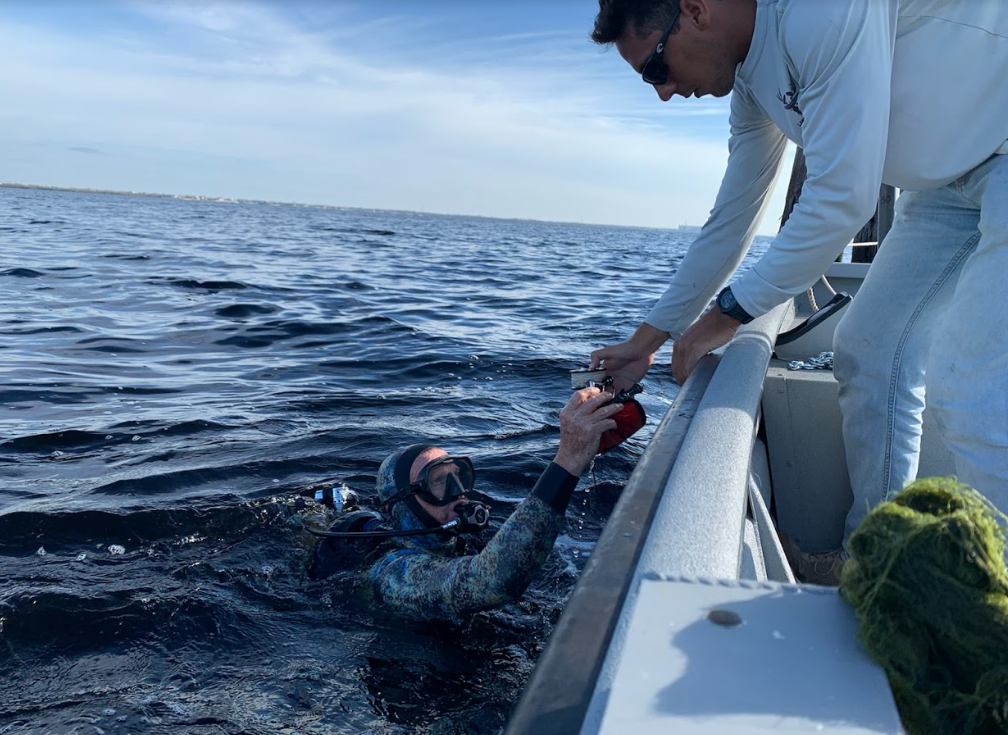What did Ian do to Sanibel’s water, wildlife? Conservation foundation aims to find out
Amy Bennett Williams
Article from Fort Myers News-Press
Even if you manage to tune out the constant media coverage of Hurricane Ian’s toll on human lives and property on Sanibel, the sensory reminders are everywhere: chainsaw whine, shattered homes, boarded stores, muck stink on the breeze.
But what about nature? When a storm of that magnitude roars through a region, what becomes of beach-nesting birds and sea turtles? Of gopher tortoises sheltering in burrows? And what happened to the water flowing from the Caloosahatchee and surrounding Lee County’s barrier islands?
Scientists will likely be answering these questions for years to come, but the Sanibel-Captiva Conservation Foundation got a jump on things right away. Two days after landfall SCCF marine lab director Eric Milbrandt was making plans to check water quality. After all the fuel spills, sewage overflows and swamped septic systems, questions about safety were top-of-mind, Milbrandt said. “Many of us are especially concerned about human health indicators, such as bacteria and toxins.”
But Milbrandt knew that their regular sampling, done monthly from Lake Okeechobee to the Gulf, wouldn’t be possible. So he reached out to University of Florida’s Center for Coastal Solutions, which is working on harmful algae bloom research funded by EPA and the U.S. Army Corps of Engineers,” said Milbrandt. Staying on the island was impossible, but Milbrandt was able to offer the team lodging in his Fort Myers home, which was in good shape post-Ian.
Monday, SCCF research assistant Sierra Greene, and UF team members Adam Hymel, Todd Van Natta, and Center for Coastal Solutions Director Christine Angelini headed out to sample in the Caloosahatchee, lower Charlotte Harbor, Matlacha Pass, Fort Myers Beach, and around the southern tip of Sanibel.
How did the water look? “Particularly murky,” said Angelini. Especially in the river, Matlacha Pass and Fort Myers Beach although coast of Sanibel looked relatively clear, she said, “highlighting that there is a lot of variation in impacts of the hurricane on water quality in the region and a need to keep a close watch on changing conditions.”
The team will look at nitrogen and phosphorus levels as well as fecal bacteria, phytoplankton and industrial pollutants, all of which have human and environmental significance.
Knowing the levels will help scientists understand how safe the water is after Ian’s storm surge and flooding sent huge amounts of land-based pollutants into coastal waters.
“We are looking forward to getting results back from the lab analysis to identify what’s going on out there. We really need these data to guide the next steps in the response,” said Angelini.
Even though the foundation still can’t use its own lab (it survived intact, but has no power) it’s working with others, including the University of Florida to process water samples.
At the same time, the foundation has been looking after its human neighbors. Immediately after the storm, it pivoted to hurricane help. Its primary research vessel, the R/V Norma Campbell got repurposed into an equipment hauler, carrying ATVs, utility vehicles, and golf carts to first responders.
Foundation vehicles, including pickups, ATVs and a skid-steerer that escaped storm surge were pressed into service as well. Even with a third of its employees storm-displaced, staffers went door-to-door checking on residents, hauling water and transporting evacuees and their pets, including cats, birds, and a tortoise, said CEO James Evans. “This is a time when we need to protect and care for each other as well as our beloved nature.”
On an island where some 70% of its land is preserved, its conservation ethic remains intact, Evans says: “We’ve passed people walking on the road who have serious damage to their homes, yet … they want to know how wildlife and our ecosystems are coping.” The good news: “We’ve been seeing a lot of wildlife.”
So far, they know five of their tagged snowy plovers survived the storm – two made it all the way to Pinellas County while two others turned up in Sarasota County and another was in Naples.
The foundation’s shorebird team saw piping plovers, Forster’s terns and Wilson’s plovers on Bunche Beach near the Sanibel causeway.
While doing search and rescue, staffers saw several turtle species: a peninsula cooter a Florida box turtle, a striped mud turtle and several gopher tortoises. Their presence illustrates that even after a catastrophe, wildlife can endure, says Chris Lechowicz, the foundation’s wildlife and habitat management director. In the coming months, his team will look at what the saltwater flooding did to freshwater wetlands.
And they even pitched in to help an exotic African spurred tortoise, 90-pound Cletus.
When they had to evacuate, his owners had to leave him behind on the island. After the storm, staffers scooped him up and boated him to safety on the mainland, where he was reunited with his people.
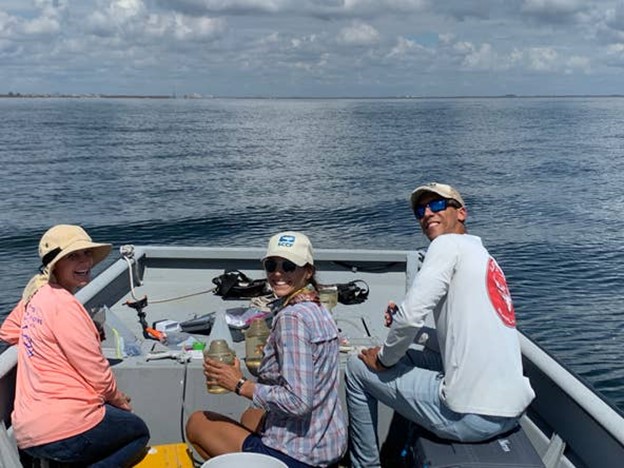
The water sampling team working off the southern tip of Sanibel, left to right: UF Center for Coastal Solutions Director, Dr. Christine Angelini, SCCF Water Quality Technician Sierra Greene, and CCS Field Technician Adam Hymel.
SPECIAL TO THE NEWS-PRESS
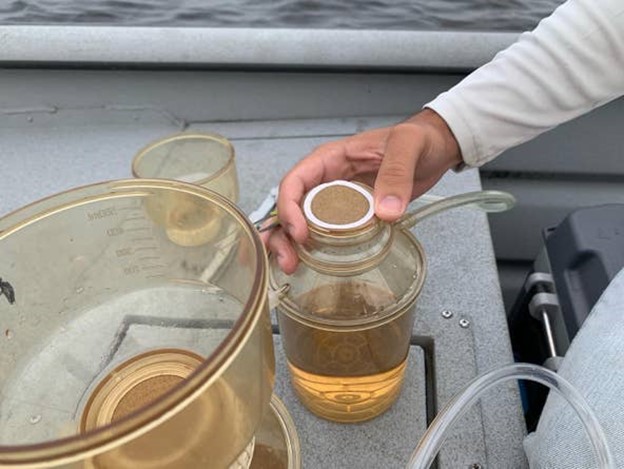
Water samples taken after Hurricane Ian will be analyzed for harmful algae, nutrients, fecal indicator bacteria and dissolved oxygen.
SPECIAL TO THE NEWS-PRESS
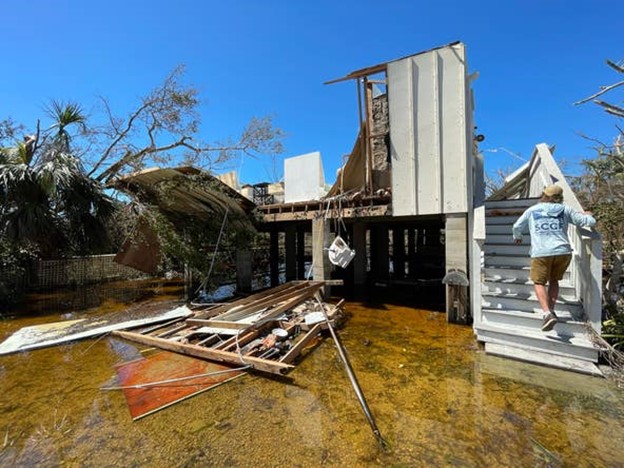
This is what Hurricane Ian did to a home for Sanibel-Captiva Conservation Foundation interns.
SPECIAL TO THE NEWS-PRESS
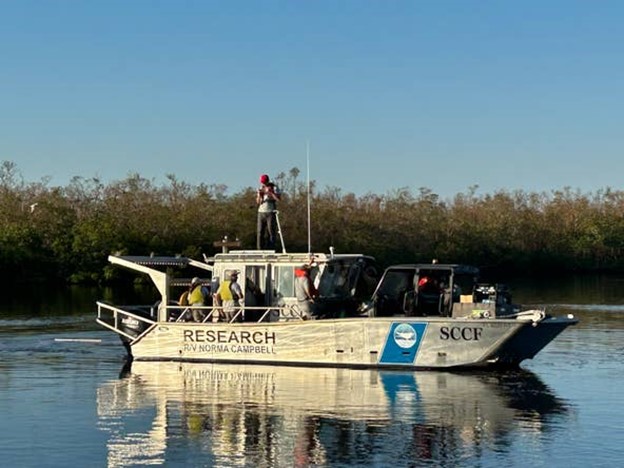
The SCCF’s research vessel Norma Campbell turned into a cargo boat after Hurricane Ian. Here she is hauling supplies to Sanibel.
SPECIAL TO THE NEWS-PRESS

Storm survivor: This snowy plover dubbed YB, one of the birds being tracked by the Sanibel-Captiva Conservation Foundation, turned up in Pinellas County following Hurricane Ian.
SPECIAL TO THE NEWS-PRESS

Hopeful sign: Staff of the Sanibel-Captiva Conservation Foundation spotted this peninsula cooter turtle on the island after Hurricane Ian tore through.
SPECIAL TO THE NEWS-PRESS
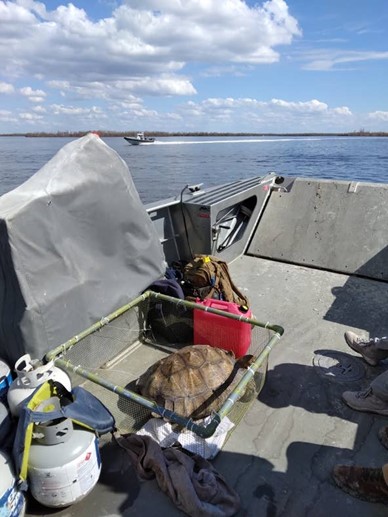
Rescued 90-pound spurred tortoise Cletus in transit from Sanibel to his new mainland shelter.
SPECIAL TO THE NEWS-PRESS
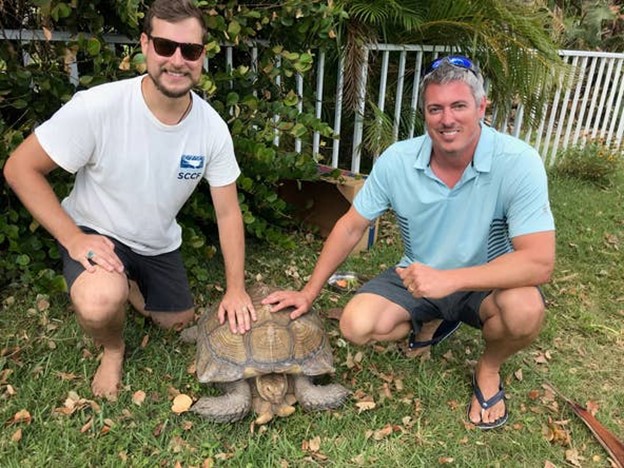
Cletus the tortoise is back with owner, Patrick Strader, right, after the Sanibel-Captiva Conservation Foundation rescued him. Environmental Policy Director Matt DePaolis is at left.
SPECIAL TO THE NEWS-PRESS
